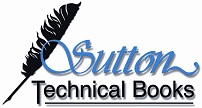Primer: DOT-117 Tank Car Insulation

This primer provides a clear, technically grounded overview of tank car insulation systems and the DOT-117/TC-117 standard that governs the transport of Class 3 flammable liquids in North America. It explains how modern tank cars are constructed, how thermal protection systems function during normal operation and fire exposure, and why insulation plays a central role in preventing catastrophic tank failure. The document reviews the regulatory framework in the United States and Canada, summarizes notable rail incidents that shaped current requirements, and outlines key elements of testing, inspection, and maintenance.
The primer also examines emerging trends, including advanced insulation materials, real-time sensor monitoring, and potential applications for hydrogen and cryogenic service. A 10-question knowledge check reinforces the major concepts.
This guide is intended for railroad professionals, energy-industry engineers, emergency planners, fire departments and anyone seeking a concise, practical understanding of tank car thermal protection and the evolution of DOT-117 standards.
Publishing Details
3,700 words
18 pages
This Primer is priced at $25 (U.S.) It can be downloaded here.
Table of Contents
Introduction
Terminology
Tank Car Construction
Insulation
Insulation Materials
Tank Car DOT Classification
DOT-117 and TC-117 Requirements
Testing and Certification
Operational Considerations
Sulfur
Incidents
Lac-Mégantic, Quebec (2013)
Casselton, North Dakota (2013)
Mount Carbon, West Virginia (2015)
East Palestine, Ohio (2023)
Regulations and Standards
United States
Canada
Industry Standards
Title 49 CFR§ Part 179
Update
Emerging Trends
Reference Material
Knowledge Check: 10-Question Quiz
Questions
Answer Key
Quiz
The following are the questions in the concluding quiz.
1) What is the primary purpose of insulation on a rail tank car?
a) Control heat transfer and delay fire effects
b) Reduce noise
c) Improve aerodynamics
d) Prevent corrosion
2) Which regulation defines the fire exposure test for tank car thermal protection?
a) 49 CFR §173.31
b) 49 CFR §179.18
c) NFPA 30
d) AAR M-1002 Appendix C
3) What is the minimum shell thickness for a DOT-117 tank car?
a) 3/8 inch
b) 7/16 inch
c) 9/16 inch
d) 1 inch
4) Which insulation material provides the highest fire-temperature resistance?
a) Fiberglass
b) Ceramic fiber
c) Polyurethane foam
d) Foam glass
5) What is the minimum fire-exposure time a TPS must withstand in a pool fire?
a) 30 minutes
b) 60 minutes
c) 90 minutes
d) 100 minutes
6) Which specification governs Canadian flammable-liquid tank cars?
a) TC-111
b) TC-117
c) TC-105
d) TP14895
7) What event most directly prompted the introduction of the DOT-117 standard?
a) Casselton derailment
b) Mount Carbon fire
c) Lac-Mégantic disaster
d) East Palestine release
8) What inspection finding most likely indicates water intrusion into insulation?
a) Bright metal sheen
b) Bulging jacket seams
c) Uniform color
d) Dry surfaces
9) Which organization publishes the M-1002 tank-car specification that includes Appendix E (thermal-protection test procedures)?
a) NFPA
b) ASTM
c) API
d) Association of American Railroads (AAR)
10) Which field observation is most likely to indicate corrosion under insulation (CUI) on a tank car?
a) Bright, uniform jacket finish
b) Bulging or distorted jacket seams
c) Even surface temperature across the shell
d) Clean weld seams with no discoloration

